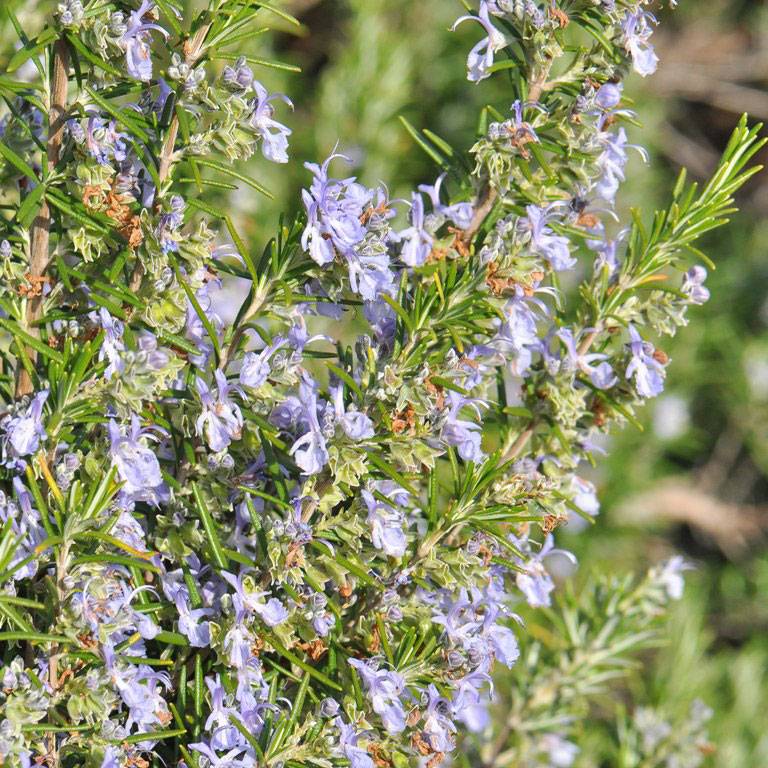Rosemary
 Rosemary can be found in a large portion of the Mediterranean basin amongst other coastal shrubs and bushes reaching an altitude of 600 meters. Rosemary grows best in chalky soils where green oaks, thyme, and dorycnium also grow. It can also be found growing in siliceous soils in the company of French lavender.
Rosemary can be found in a large portion of the Mediterranean basin amongst other coastal shrubs and bushes reaching an altitude of 600 meters. Rosemary grows best in chalky soils where green oaks, thyme, and dorycnium also grow. It can also be found growing in siliceous soils in the company of French lavender.
The bush reaches 50 to 150 cm and is known for its aromatic smell. The bushy stems can add a couple of meters to the plants height.
The tough, indeciduous leaves are 2 to 3 centimeters long and 1 to 3 centimeters wide and rounded on the edges. The upper side of the leaves is green while the underside is whitish green. The flowers are light blue and often grouped by pairs or in small clusters at the end of each stem. The corolla forms a 2 centimeter long tube. The two violet stamens jut out and the pistil is long and curved.
Rosemary is an excellent source of honey. The flowers appear with the first autumnal rain and last through winter except in extreme cold. The flowers are the most abundant from February to April. The sugar content can be as high as 45% with up to 52% in saccharose (sucrose).
The best Rosemary Honey is harvested in March and April. When the humidity is favorable, the production is greater. Sometimes, Rosemary Honey can also be harvested in autumn.
All of our hives feed on Rosemary Honey during hibernation.
